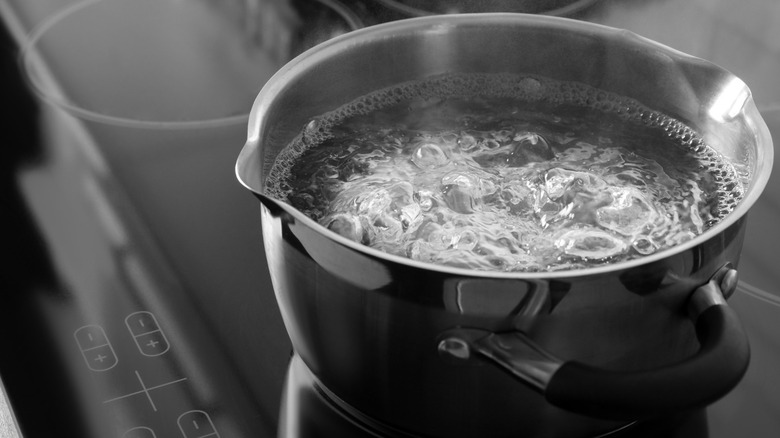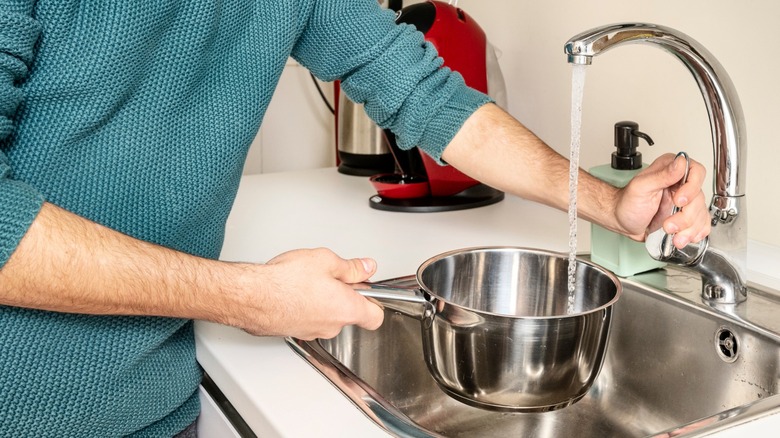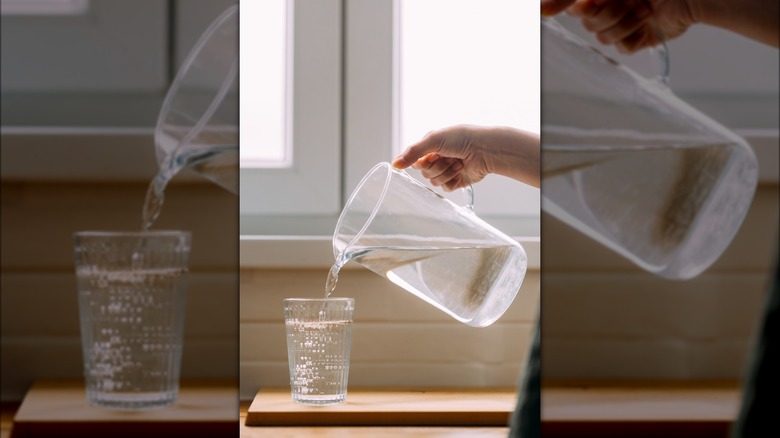How Long Must You Boil Water Before It's Safe To Drink?
Whether you're hiking in the wilderness or without water thanks to a strong storm that has wreaked havoc on your area's water lines, you may find yourself needing to boil water to make it safe for drinking or other uses. Why? Because it's important to heat potentially contaminated water at high temperatures long enough to kill any potential pathogens and render it safe or you might get ill.
If your water supply is compromised, local health officials may issue a warning to use bottled water or boil tap water. If this happens, the Centers for Disease Control and Prevention (CDC) advises that extra caution should be taken when using tap water. While it can generally still be used for washing hands, a person should be careful not to swallow any while taking a shower. Even wetting a toothbrush and rinsing your mouth with tap water should be avoided while brushing your teeth.
Ice made using water lines running through an appliance should also be avoided, as even filtered tap water will need to be boiled. Water must reach temperatures of at least 160 degrees Fahrenheit to kill pathogens like harmful bacteria, but a good strong rolling boil is ideal.
A rolling boil is key
There are several important factors to consider when boiling water for drinking. According to the U.S. Department of Agriculture (USDA), water needs to reach a rolling boil, and it must boil at that vigorous pace for at least one minute to kill potential pathogens. If you live at a high altitude (5,000 feet or higher), water must be boiled for at least three minutes. The extra time relates to the fact that boiling temperatures decrease with altitude. A general rule of thumb is that the boiling temperature drops one degree for every 500 feet you ascend.
A rolling boil occurs when the bubbles in the pot are very large and quickly move to the water's surface, where they break. Bubbles should move rapidly in the water as it is boiled. One trick to get there faster is to leave the cover on the pot when boiling water to decrease evaporation and keep energy inside.
If you boil your water and find that it's cloudy, the CDC recommends that you strain it through a new coffee filter or a clean towel. You can also allow the cloudy water to settle at the bottom of your pot, then pour the clean water off the top and boil it again. Once the water has been boiled for an adequate amount of time, it must be allowed to cool on its own before it is stored in a clean, covered container.
How to improve the taste of boiled water
Water that has been boiled might not have the same refreshing flavor as the water you are accustomed to. To make it taste better, the USDA recommends adding a pinch of salt per quart or liter of water.
Another option to improve the flavor of boiled water is to pour the water multiple times from one clean container to another. This aerates the water — which lost its air during boiling — thus eliminating the unpleasant flat taste. You can also add life back to the water by blowing air into it. To employ this method, use a straw — or just your mouth — and blow bubbles into your water for around 30 seconds just before drinking it.
If you're still finding the taste of your boiled drinking water undesirable you can utilize water flavor sticks or tablets to improve the experience. These can be purchased at your local grocery store and feature a wide array of flavors that mask the funky flat taste of boiled water. You can also opt to use fresh ingredients to enhance your water such as fresh herbs and slices of fruit or vegetables. Popular choices include lemon, lime, cucumber, and mint.


